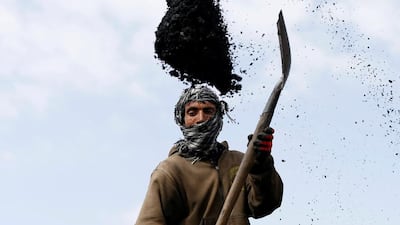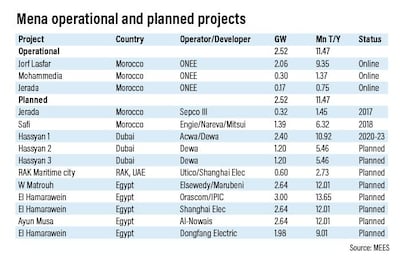Efforts to diversify the power mix are gaining momentum with the Middle East and North Africa region aiming to add more coal-fired power plants, despite its lack of reserves, the Arab Petroleum Investments Corporation (Apicorp) said.
A region-wide effort is being heralded by governments to create a basket of energy sources to help meet the rise in demand for electricity. “There are several reasons governments are looking at coal, but the most important is to diversify the energy mix and enhance energy security,” Apicorp said in a new report.
However, for a region looking to shield itself from external liabilities, the absence of coal reserves will require countries to source from the open market. “While importing coal reserves still open the region up to volatility, it reduces the reliance on natural gas. It’s better than relying on one source,” said Ghassan Alakwaa, an energy analyst at Apicorp.
__________________
Read more:
Dubai set for world’s cheapest night-time solar power
Middle East is ‘Promised Land’ for renewable energy investment
__________________
Historically, coal has not been an option in Mena, except for Morocco. These countries have been relying on oil and gas-fired power plants to meet most of their electricity needs. The hydrocarbon-rich GCC has always looked to cheap-to-extract resources while less-endowed nations rely on fuel imports.
Mr Alakwaa said that while everyone was diversifying to improve energy security, momentum was more with renewables.
But renewables cannot fill the entire gap, not yet at least as solar and wind energy are currently unable to provide a 24-hour continuous supply of power at a cost-competitive rate to conventional power. The baseload, or a power source that can maintain continuous operations, is still required to complement these projects to avoid disruption.
__________________
Read more:
Saudi natural gas demand a welcome boost for renewables
Egypt opening its gas market will fuel growth
__________________
Natural gas is one way, but for a country such as the UAE, slashing import bills and reliance on unstable regional relationships outweighs the gas option. So the country began ushering in the $1.8bn Hassyan coal power plant, slated to be online by 2023.
Coal remains the dominant fuel providing around 40 per cent of the world’s electricity, but up front capital costs are high compared to the competition. Apicorp said that the costs range from $1.2bn to $3bn per gigawatt of installed capacity, significantly less than nuclear and comparable to gas-fired plants. However, the cost to run a coal plant is lower. Apicorp said investment decisions were heavily dependent on the availability of finance, government support and coal supplies.
Currently there are three operational coal plants in the region, all in Morocco, but another seven are planned - including the UAE’s Hassyan.
__________________
Read more:
UAE set for low-cost power benchmark with Hassyan plant
Acwa Power wins solar contracts in Egypt
__________________
Paddy Padmanathan, the chief executive of Acwa Power, the company behind the Hassyan project, said countries are looking to balance the fuel mix while generating electricity at the lowest possible cost.
He said that the levelised cost of generated electricity, which includes purchasing coal from a provider such as Australia, is less than 5 US cents per kilowatt hour (kWh). “The closest price that can compete in renewable energy with storage is concentrated solar power, which is just under 10 cents,” he said. “So to fulfill the objective of a competitive generation solution with a diverse fuel mix, having a bit of coal is understandable.”
Coal may live on in the region, but it will be a restrained growth worldwide as countries focus more on renewables to meet climate change goals. “Coal’s share is expected to increase in the next five to 10 years, but its share in the power mix will remain very limited,” Mr Alakwaa said.


